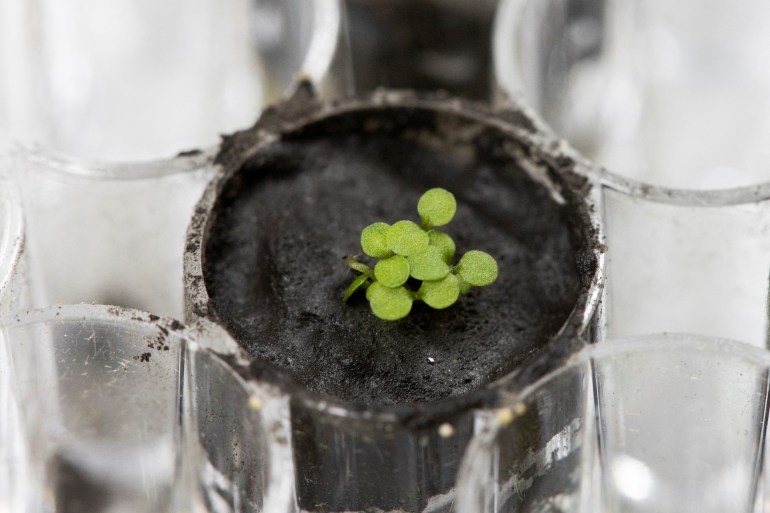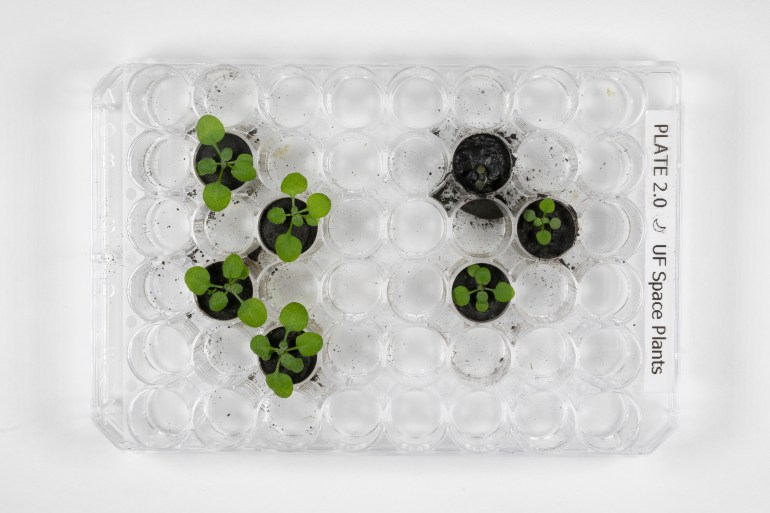In giant leap forwards, scientists grow plants in Moon soil
![]()
In giant leap forwards, scientists grow plants in Moon soil
The breakthrough experiment sees seeds germinate in lunar samples collected during NASA’s Apollo missions decades ago.

Published On 13 May 202213 May 2022
Scientists have for the first time grown seeds in lunar soil collected by US space agency NASA’s long-ago moonwalkers, an achievement that heralds the promise of using earthly plants to support human outposts on other worlds.
Researchers in the United States said on Thursday that they had planted seeds of a diminutive flowering weed called Arabidopsis thaliana – a type of cress – in 12 small thimble-sized containers, each bearing a small sample of material retrieved during the Apollo missions in 1969 and 1972.
KEEP READING
list of 4 itemslist 1 of 4
Astronomers reveal first image of black hole at Milky Way’s centre
list 2 of 4
SpaceX capsule brings four astronauts home from six-month mission
list 3 of 4
Rocket Lab helicopter catches rocket booster, then drops it
list 4 of 4
SpaceX capsule carrying latest astronaut crew docks with ISS
end of list
The Moon soil, also known as lunar regolith, has sharp particles and a lack of organic material, differing greatly from the soil on Earth.
It was therefore unknown whether the seeds would germinate. But, after two days, they sprouted and grew.

“When we first saw that abundance of green sprouts cast over all of the samples, it took our breath away,” said horticultural sciences professor Anna-Lisa Paul, director of the University of Florida Interdisciplinary Center for Biotechnology Research and co-leader of the study published in the journal Communications Biology.
“Plants can grow in lunar regolith. That one simple statement is huge and opens the door to future exploration using resources in place on the moon and likely Mars,” she added.
NASA eyes lasting human presence on Moon
NASA is preparing to return to the Moon as part of the Artemis programme, with a long-term goal of establishing a lasting human pres





















